
Yazoo County is a county located in the U.S. state of Mississippi. As of the 2020 census, the population was 26,743. The county seat is Yazoo City. It is named for the Yazoo River, which forms its western border. Its name is said to come from a Choctaw language word meaning "River of Death".

Leflore County is a county located in the U.S. state of Mississippi. As of the 2020 census, the population was 28,339. The county seat is Greenwood. The county is named for Choctaw leader Greenwood LeFlore, who signed a treaty to cede his people's land to the United States in exchange for land in Indian Territory. LeFlore stayed in Mississippi, settling on land reserved for him in Tallahatchie County.

Holmes County is a county in the U.S. state of Mississippi; its western border is formed by the Yazoo River and the eastern border by the Big Black River. The western part of the county is within the Yazoo-Mississippi Delta. As of the 2020 census, the population was 17,000. Its county seat is Lexington. The county is named in honor of David Holmes, territorial governor and the first governor of the state of Mississippi and later United States Senator for Mississippi. Holmes County native, Edmond Favor Noel, was an attorney and state politician, elected as governor of Mississippi, serving from 1908 to 1912.

Rosedale is a city in Bolivar County, Mississippi, United States. The population was 1,873 at the 2010 census, down from 2,414 in 2000. Located in an agricultural area, the city had a stop on the Yazoo and Mississippi Valley Railroad, which carried many migrants north out of the area in the first half of the 20th century.

Port Gibson is a city in Claiborne County, Mississippi, United States. The population was 1,567 at the 2010 census. Port Gibson is the county seat of Claiborne County, which is bordered on the west by the Mississippi River. It is the site of the Claiborne County Courthouse.

Clarksdale is a city in and the county seat of Coahoma County, Mississippi, United States. It is located along the Sunflower River. Clarksdale is named after John Clark, a settler who founded the city in the mid-19th century when he established a timber mill and business. Clarksdale is in the Mississippi Delta region and is an agricultural and trading center. Many African-American musicians developed the blues here, and took this original American music with them to Chicago and other northern cities during the Great Migration.

Hernando is the county seat of DeSoto County, on the northwestern border of Mississippi, United States. The population was 17,138 according to the 2020 census records. DeSoto County is the second-most-populous county in the Memphis metropolitan area, which includes counties in Tennessee, Arkansas and Mississippi.

Edwards is a town in Hinds County, Mississippi, United States. The population was 1,034 at the 2010 census, down from 1,347 at the 2000 census. It is part of the Jackson Metropolitan Statistical Area.

Durant is a city near the central eastern border of Holmes County, Mississippi, United States, and Big Black River. The town was founded in 1858 as a station on the Mississippi Central Railroad, later part of the Illinois Central. Durant was named for Louis Durant, a Choctaw chief who had lived on this site before the United States undertook Indian Removal in the 1830s, forcing him and most of the Choctaw to Indian Territory west of the Mississippi River.

Goodman is a town in southeastern Holmes County, Mississippi, United States. Per the 2020 census, the population was 1,258.

Pickens is a town in Holmes County, Mississippi, United States. Per the 2020 census, the population was 920.
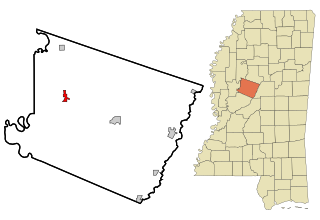
Tchula is a town in Holmes County, Mississippi, United States. The population was 1,650 at the 2020 census, down from 2,332 in 2000.

Itta Bena is a city in Leflore County, Mississippi, United States. The population was 2,049 at the 2010 census. The town's name is derived from the Choctaw phrase iti bina, meaning "forest camp". Itta Bena is part of the Greenwood, Mississippi micropolitan area. It developed as a trading center of an area of cotton plantations.
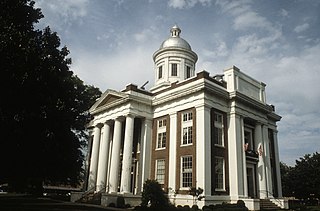
Canton is a city in Madison County, Mississippi, United States. The population was 10,948 at the 2020 census, down from 13,189 in 2010. It is the county seat of Madison County, and is situated in the northern part of the metropolitan area surrounding the state capital, Jackson.
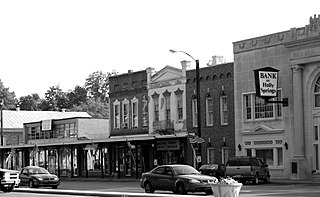
Holly Springs is a city in, and the county seat of, Marshall County, Mississippi, United States, near the border with Tennessee to the north. As of the 2020 census, the population was 6,968, down from 7,699 in 2010. Along with the Mississippi Delta, in the 19th century, the area was developed by European Americans for cotton plantations. After the Civil War, many freedmen continued to work in agriculture as sharecroppers and tenant farmers.

Macon is a city in Noxubee County, Mississippi along the Noxubee River. The population was 2,768 at the 2010 census. It is the county seat of Noxubee County.
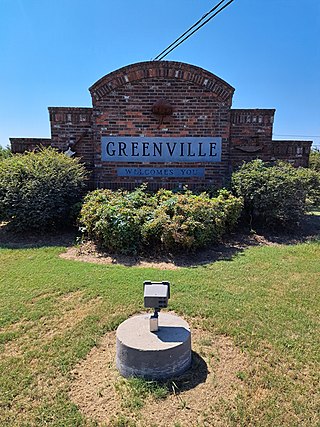
Greenville is the 9th most populous city in Mississippi. It is the county seat of Washington County. The population was 29,670 at the 2020 census. It is located in the area of historic cotton plantations and culture known as the Mississippi Delta.

Bentonia is a town in Yazoo County, Mississippi, United States. The population as of the 2020 census was 319.
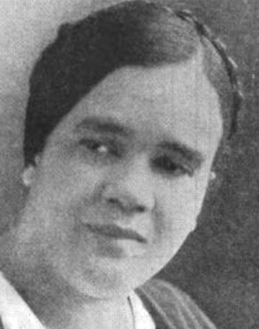
Arenia Conelia Mallory was an American educator based in Lexington, Mississippi. She was recognized nationally as a political activist working for African-American education and civil rights. She gained a national reputation as president of Saints Industrial and Literary School, which she developed over 50 years from a few students in 1926 to a private K-12 academic school and junior college on 350 acres. It was affiliated with the Pentecostal Church of God in Christ, in which Mallory had been active since about age 18.
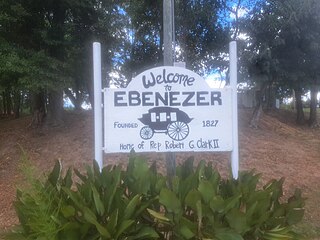
Ebenezer is an unincorporated community located in Holmes County, Mississippi, United States. Ebenezer is located at the western end of the eastern segment of Mississippi Highway 14, approximately 10 miles (16 km) south of the county seat of Lexington and 4 miles (6.4 km) approximately west of Goodman.

























